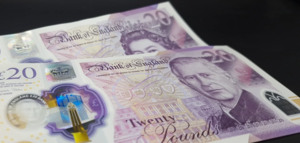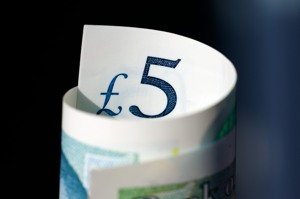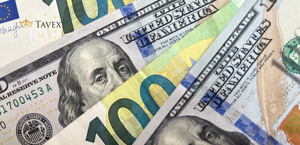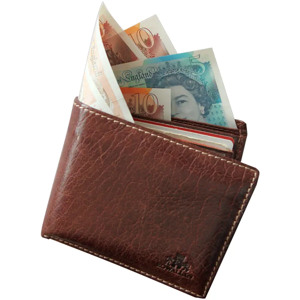Tavex uses cookies to ensure website functionality and improve your user experience. Collecting data from cookies helps us provide the best experience for you, keeps your account secure and allows us to personalise advert content. You can find out more in our cookie policy.
Please select what cookies you allow us to use
Cookies are small files of letters and digits downloaded and saved on your computer or another device (for instance, a mobile phone, a tablet) and saved in your browser while you visit a website. They can be used to track the pages you visit on the website, save the information you enter or remember your preferences such as language settings as long as you’re browsing the website.
| Cookie name | Cookie description | Cookie duration |
|---|---|---|
| tavex_cookie_consent | Stores cookie consent options selected | 60 weeks |
| tavex_customer | Tavex customer ID | 30 days |
| wp-wpml_current_language | Stores selected language | 1 day |
| AWSALB | AWS ALB sticky session cookie | 6 days |
| AWSALBCORS | AWS ALB sticky session cookie | 6 days |
| NO_CACHE | Used to disable page caching | 1 day |
| PHPSESSID | Identifier for PHP session | Session |
| latest_news | Helps to keep notifications relevant by storing the latest news shown | 29 days |
| latest_news_flash | Helps to keep notifications relevant by storing the latest news shown | 29 days |
| tavex_recently_viewed_products | List of recently viewed products | 1 day |
| tavex_compare_amount | Number of items in product comparison view | 1 day |
| Cookie name | Cookie description | Cookie duration |
|---|---|---|
| chart-widget-tab-*-*-* | Remembers last chart options (i.e currency, time period, etc) | 29 days |
| archive_layout | Stores selected product layout on category pages | 1 day |
| Cookie name | Cookie description | Cookie duration |
|---|---|---|
| cartstack.com-* | Used for tracking abandoned shopping carts | 1 year |
| _omappvp | Used by OptinMonster for determining new vs. returning visitors. Expires in 11 years | 11 years |
| _omappvs | Used by OptinMonster for determining when a new visitor becomes a returning visitor | Session |
| om* | Used by OptinMonster to track interactions with campaigns | Persistent |
| Cookie name | Cookie description | Cookie duration |
|---|---|---|
| _ga | Used to distinguish users | 2 years |
| _gid | Used to distinguish users | 24 hours |
| _ga_* | Used to persist session state | 2 years |
| _gac_* | Contains campaign related information | 90 days |
| _gat_gtag_* | Used to throttle request rate | 1 minute |
| _fbc | Facebook advertisement cookie | 2 years |
| _fbp | Facebook cookie for distinguishing unique users | 2 years |

Inflation is probably the most famous economic phenomenon in the world.
This has been especially true in the past few years, when much of the planet has faced record high inflation. Everyone has experienced its effects firsthand, and most people have sought ways to avoid the pressures of inflation.
To truly understand the threat that inflation poses to the economy, we need to understand how it can develop into hyperinflation. How does this happen? What are the reasons? How can we avoid it? We summarise in the following article.
What is Hyperinflation?

Just like inflation, but on a more extreme scale, hyperinflation is a rapid, excessive, and uncontrollable increase in the money supply that leads to an equally uncontrollable rise in prices in the economy. That means a lot more money chasing fewer goods.
More on the subject: The real meanings of inflation and deflation?
The way we measure the effects of inflation is through the Consumer Price Index (CPI)
The CPI tracks changes in the prices of consumer goods and services – such as food, housing costs and other daily living expenses.
The American economist Philip Kagan in his book “The Monetary Dynamics of Hyperinflation” defines the beginning of hyperinflation as:
“When the prices of goods and services in the economy increase by 50% or more on a monthly basis.”
This implies an annual price growth of 12,874%, which means that if a loaf of bread costs one dollar at the beginning of the year, by the end it will cost $129.74.
Of course, an economy does not have to reach these levels of inflation to be considered a catastrophic event.
How Does Hyperinflation Occur?

Hyperinflation is always the result of excessive money printing by governments and the use of fiat currency . A fiat currency means that the currency is not backed by any other asset – such as gold. Most currencies in the world today are fiat currencies.
Until recently, in the 20th century, most major economies followed the gold standard, which meant that no new money could be created without an equal increase in gold reserves. This mechanism protected against both inflation and, most importantly, hyperinflation.

More on the subject: What is the gold standard?
The gold standard made it extremely difficult for governments to engage in excessive spending financed by increasing the money supply. Any increase in spending required an increase in reserves.
This system promoted fiscal responsibility and ensured that new spending came from real increases in revenue, not through credit expansion or money printing.
It also protected citizens’ savings and income by ensuring that their money retained its value
For this reason, most governments, in periods of war or severe fiscal crises, abandoned the gold standard and chose the inflationary path to finance their growing deficits.
When governments run out of money and can’t raise new funds through higher taxes, debt or other instruments – they resort to outright printing new money to finance spending.
A Monetary Illusion

In the words of Nobel laureate economist Milton Friedman:
Inflation is always and everywhere a monetary phenomenon, in the sense that it is created and can only be produced by a faster increase in the quantity of money than in production
Governments resort to printing money to finance their deficits. As the money supply rapidly increases, they proportionately devalue all money already in circulation. This means that for every new note that is printed, the note in your pocket loses some of its value.
Initially, inflation can cause the so-called “monetary illusion”. This is when the money supply increases, but the markets have not yet realised it, and initial consumption is perceived as real economic growth. People spend more, businesses spend more.
Over time, the markets adjust and realise that the economy is not producing more, there are no more goods and services, there is only more money . Then the price hikes start.
In the words of Milton Friedman:
“Inflation is like alcoholism – in both cases, when you start drinking too much or start printing too much money – the good effects come first and the bad effects come later.”
The Spiral of Hyperinflation

The price increases that can result from rapid money printing create a vicious cycle requiring ever-increasing amounts of newly printed money to finance government deficits.
Thus, both monetary and price inflation are running at a rapid pace
These rapidly rising prices cause a widespread reluctance among the local population to hold the local currency as it rapidly loses its purchasing power in the short term and long term. Instead, they quickly spend all the money they receive, which increases the velocity of cash flow; this, in turn, leads to further acceleration of prices.
This increase in inflation causes the newly printed money used for deficits to depreciate, requiring even more printing to finance the same deficit, creating a spiral.
The bottom line is that an episode of extremely high inflation can easily turn into an episode of hyperinflation.
Examples of Hyperinflation

There are many examples of hyperinflation from around the world, most from the 20th century when governments abandoned the gold standard and switched to fiat currencies.
In the following lines, we will focus on the most famous cases.
1) German Weimar Republic (1922–1923) 🇩🇪
Weimar Germany (1922–1923) is perhaps the best-documented historical episode of hyperinflation. Before World War I, the exchange rate was just over four marks to one US dollar. By July 1922 prices have increased by 700 percent.
The government had to print million-mark and then billion-mark notes
By the end of 1923 one US dollar was equal to one trillion marks.
A well-known example is that a trolley full of money could not buy a newspaper, and a German student remembers how he ordered a cup of coffee for 5,000 marks, and the second cost him already 7,000 marks for the time drank the first one.
The crisis was caused by the exponential debt accumulated during the First World War and by the obligation to pay war reparations to the Allied countries from the state budget. The Weimar Republic financed these deficits by printing money.
2) Zimbabwe (2007–2009) 🇿🇼
Zimbabwe entered a period of hyperinflation in March 2007, when the daily inflation rate reached 98% by early 2009. The country’s period of hyperinflation began in 1999, after it experienced several periods of drought and subsequent decline in GDP.
As a result, the country was forced to borrow more than it produced, and the government began to spend more. It raises taxes to pay bonuses to independence war veterans, engages in war in the Congo, and borrows from the International Monetary Fund to finance infrastructure projects.
The government starts printing money to cover these costs, causing inflation to skyrocket. Residents began moving to other countries to escape the economy. Until 2010 millions of people have left the country and the economy is in ruins.
3) Yugoslavia (1992–1994)
The episode of hyperinflation in Yugoslavia continued from March 1992 until January 1994. Inflation reached a monthly rate of 313 million percent in January 1994.
Daily inflation is 62%, with an inflation rate of 2.03% within 1 hour, higher than the annual inflation rate in many developed countries.
4) Venezuela (since 1983) 🇻🇪
Venezuela began experiencing continuous and uninterrupted inflation in 1983 with double-digit annual inflation rates.
By 2014, under Nicolás Maduro’s rule, inflation rates became the highest in the world and continued to rise in the following years, with inflation exceeding 1,000,000%.
Key Takeaways
- Hyperinflation is a stark reminder of the dangers posed by unchecked monetary policy and excessive money printing.
- While inflation is a common economic phenomenon, its escalation into hyperinflation can devastate economies, eroding the value of money and causing widespread financial instability.
- Historical examples, such as the Weimar Republic, Zimbabwe, Yugoslavia, and Venezuela, illustrate the severe consequences of fiscal mismanagement and reliance on fiat currencies.
- Understanding the causes and mechanisms of hyperinflation underscores the importance of responsible economic policies to preserve the stability of currency and the prosperity of nations.

















